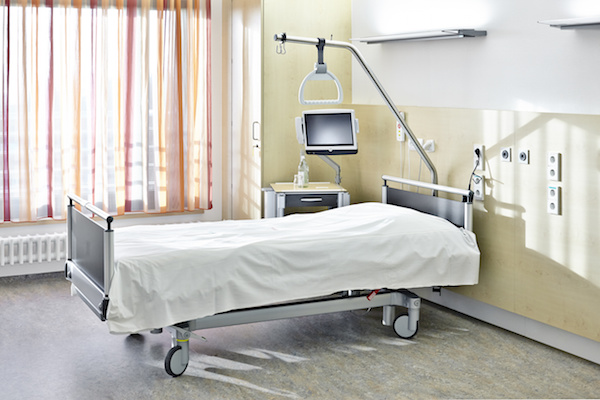SATURDAY, Nov. 7, 2015 (HealthDay News) — Public defibrillators can help anyone save the life of someone suffering cardiac arrest, but the devices are often kept behind locked doors, a new study finds.
At issue is the accessibility of devices called automated external defibrillators, or AEDs. They are portable, layperson-friendly versions of the devices doctors use to “shock” the heart out of cardiac arrest.
It’s now routine for paramedics to carry AEDs, and the devices are often available in large venues, such as airports and sports stadiums, as well as schools and private businesses.
To live up to their full potential, though, those devices have to be readily available, said study author Timothy Chan, a researcher at the University of Toronto.
However, his team found, that’s often not the case.
The researchers looked at the cases of 451 Toronto residents who went into cardiac arrest within 100 meters of an AED — about a football field’s distance. One-quarter of the time, the devices were behind locked doors.
“If the AED isn’t accessible, it’s as if it’s not there at all,” Chan said.
The study found that AEDs in schools, office buildings, industrial sites and recreational facilities were most likely to be locked up, particularly at night or on weekends — which is not surprising, Chan noted, since such buildings are not open 24/7.
Unfortunately, two-thirds of the cardiac arrests in this study occurred at night or over the weekend, Chan said.
He was to present the findings Sunday at the annual meeting of the American Heart Association, in Orlando, Fla. The data and conclusions should be considered preliminary until published in a peer-reviewed journal.
The findings “ring true,” according to Dr. Clifton Callaway, an AHA spokesperson and a professor of emergency medicine at the University of Pittsburgh.
“One of our longstanding concerns is that AEDs are not always in locations that are clearly marked, or that people are aware of,” Callaway said. It makes sense, he added, that AEDs would also frequently be inaccessible — particularly those owned by private businesses.
“A lot of businesses would buy these with their employees in mind, and not for the general public to use,” Callaway said.
He said local communities need to come up with “novel ideas” on how to make AEDs broadly available, and make sure that people know where the devices are located.
There is work being done, both Callaway and Chan said. The PulsePoint Foundation, for example, has developed a smartphone app that allows users to locate local AEDs.
Chan said companies are also working on ways to make AEDs available outdoors, in weatherproof, vandalism-proof containers.
But more innovation is needed, according to Chan. One possibility, he said, would be to bring banks on board and have AEDs available in ATM lobbies.
In Japan, Chan noted, there are AED vending machines.
AEDs can be used to restore a normal heart rhythm in some cases of cardiac arrest. Most often, cardiac arrest occurs when the heart’s main pumping chamber stops contracting and begins to quiver chaotically — depriving the body of blood and oxygen. Without prompt treatment, it’s fatal within minutes.
Each year in the United States, about 360,000 people suffer cardiac arrest outside of a hospital, according to the AHA. Less than 10 percent of those people survive.
The odds of survival do improve, however, if bystanders perform chest compressions or use an AED while waiting for paramedics to arrive.
Chan said it’s not clear how AED availability might have affected the survival of patients in his study.
Callaway also pointed out that increasing AED availability is just one piece of the picture. The public also needs to know that the devices exist, and be comfortable using them.
Local CPR courses now include AED training, Chan said.
But even without training, he added, anyone can use an AED: The devices automatically analyze the heart’s rhythm, then deliver a shock only if it’s appropriate.
Chan pointed to a widely reported study of “mock” cardiac arrests, where researchers found that untrained sixth-graders used AEDs almost as well as medical professionals did.
More information
The American Heart Association has more on cardiac arrest.
Copyright © 2025 HealthDay. All rights reserved.

